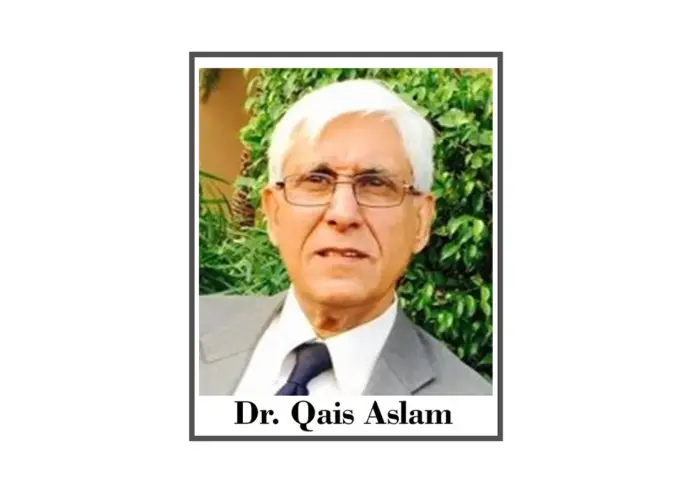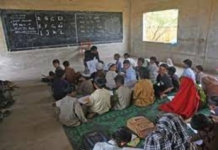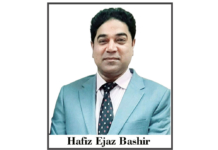The morning of January 20244 is cold and foggy, full of smog, pollution and frost. Still the people of Pakistan have geared up for work and to earn an income from their daily chores as they did in 2023. Unemployment, inflation and energy costs have increased the cost of living as well as cost of doing business in the country.
Although, 2023 was not a good year for the people of the country. Till August 14, (the day of 76th year of independence of Pakistan) the country was ruled by the PDM government that had through its economic follies and mismanagement made the lives of ordinary citizens miserable and even for many unlivable. These policies of Prime Minister Shabazz Sharif and his Finance Minister Ishaq Dar had seen the policy interest rates as high as 22% (the highest in the world after Argentina). The GDP growth rate had diminished to minus (-) o.3% and the indicators of industry, agriculture and services sectors at their lowest growth rate. According to data of Economic Survey of Pakistan 2022-2023, the manufacturing sector in Pakistan was growing at a rate of minus 3.9%; agriculture sector at only 1.6%; commodity producing sector at minus 0.5% and services sector growing at only 0.9%. With unemployment rates exceeding 12 million unemployed and poverty margins reaching near 40% (people below absolute poverty increasing to more than 4.5 million) and inflationary rates very high at 38%.
Between August and December 2023, the caretaker government of Prime Minister Anwaar-Ul-Haq Kakar had came to power in the country. The economic indicators of these five months show that the weekly inflation has gone up to 42% in December and policy interest rates have been kept constant at 22%, Economic Indicators in December 2023 showed that, the GDP Growth rate was 0.5%. The growth rate of large-scale industry was -2.94%. large-scale manufacturing has experienced a negative growth rate of almost 8%. The services sector has shown a slow growth rate of 0.86%. The agriculture sector grew by 0.23%. The unemployment rate in Pakistan is forecast to 8.50% in 2023. The unemployed people in Pakistan are forecast to 15.51 million in 2023. (Source https://www.google.com/search?q=unemployment+rate+of+pakistan+2023&sca_esv=591826272&rlz=1C1GCEU_en-GBPK977PK978&ei=kyaAZYGnIpy84-EPvt-LwAw&oq=Unemploymentrate+of+pakistan+2023&gs_lp=Egxnd3Mtd2l6LXNlcnAiIVVuZW1wbG95bWVudHJhdGUgb2YgcGFraXN0YW4gMjAyMyoCCAAyBxAAGIAEGA0yCxAAGIAEGIoFGIYDMgsQABiABBiKBRiGAzILEAAYgAQYigUYhgNIhzdQhAhY6x5wAXgBkAEBmAG_CKAB9zCqAQk0LTguMC4yLjG4AQHIAQD4AQHCAgoQABhHGNYEGLADwgIGEAAYBxge4gMEGAAgQYgGAZAGCA&sclient=gws-wiz-serp)
According to the Pakistan Bureau of Statistics, in January 2024, the consumer price index (CPI) rose to 29.7% from a year before. “The annual inflation rate in Pakistan rose to a three-month high of 29.7% in December 2023 from 29.2% in November, driven by IMF-backed hikes in energy costs and a weak currency fueling price gains. Increased taxes, implemented by authorities to maintain the IMF bailout on track, also placed an additional burden on consumers. Main upward pressures came from prices of housing & utilities (37.7% vs 33%), transport (31.3% vs 23%) and non-alcoholic beverages & tobacco (82.8% vs 82.4%). On the other hand, prices rose at a slower pace for recreation & culture (38.5% vs 53.6%), furnishings (32.5% vs 34.5%), health (23.4% vs 25%) and restaurants & hotels (30.7% vs 31.5%). Food inflation also posted the least rise in eighteen months (27.5% vs 28%). Monthly, consumer prices inched up by 0.8%, after a 2.7% hike in the previous month. Furthermore, the core inflation rate, which excludes volatile items, stood at 18.2% in December, compared to an increase of 18.6% in the prior month”. According to the data, inflation rates in Pakistan were at their highest in May 2023 when they were at 38% and were at their lowest in October 2023 when they were below 27%. In December 2023 inflation in the country was recorded at almost 30%. The central bank (SBP) governor predicted that Pakistan’s inflation rate would ease to around 20%-22% in the 2024 financial year, Source: https://tradingeconomics.com/pakistan/inflation-cpi
With a population rising to 241.5 million in 2023, or a yearly growth rate of almost 2.0%, the country needs a GDP growth rate of 4.0%. To reduce inflationary rates, the policy interest rates should come down or it is recommended an expansionary monetary policy, so that the business community of Pakistan, especially the small and medium businesses (SME’s) can get favorable loans from the banking sector for expanding their businesses or for new investments. Also, the cost of electricity and gas should be rationalized, to bring down costs both for producers as well as consumers. The rationalizing effect of a cheap dollar (foreign exchange) rate on imported inputs can be felt only when better quality exports can be produced and generated in order to earn this highly needed foreign currency. For exports to rise, the diversification of better-quality exports that are the product of the manufacturing sectors in all three sectors contributing to GDP (Agriculture, industry and services) is important. This is a tall order but can be achieved provided investments and expansion of the industrial sector is achieved through rational policy measures. The service sector can also contribute by becoming export oriented. Agriculture as an important sector to produce both exportable commodities like horticulture, meat processing and value-added dairy products as well as by producing import-substitutes like cooking oils and other such products that are being imported by Pakistani businesses. More important is the production of energy resources through environmentally friendly indigenous resources like hydel, solar and wind etc. to substitute from imported oil and coal.
In the short-run period, Pakistan to reduce inflationary pressures need more supply of goods and services produced at home, which would also mean more income generating opportunities for its labor force. The skill of economists and policy makers to make a balance between technological inputs for rapid growth and labor-intensive technologies for employment and income generation by our population is important for matching the supply side and the demand side, for removing poverty and inequality in Pakistan. This skill also implies that there must be a balance between exports and import-substitute industry for rational foreign exchange earnings and foreign exchange savings without compromising without agreements with our foreign partners. This skill also includes the balancing of inflation rate that are both incentives to demand side to buy and the supply side to sell. All this would also mean an expansionary fiscal policy where tax rates must be reduced, while tax net must be increased and government spending in infrastructure and communication must be increased for a greater injection into the economy for a rational for producers and consumers economic policy.
In the long-run period, skill enhancement and education for our youth bulge for increasing their capacity to do a business as entrepreneurs and earn a living, or their capacity to get a better paid employment as labor at home and abroad. The much-needed land reforms and protection of ownership rights of small businesses and farmers, the construction of dams and revivors for preservation and optimal use of water resources in Pakistan as well as out of box initiatives to produce green energy from our indigenous resources as well as technological development through R&D in universities, in private sector as well in government institutions for self-reliance in technology would direct the economy of Pakistan in the right direction. This also needs collaboration of Private sector of Pakistan and the research institutes of the country with foreign corporations and businesses that can help built the research and technological capacity of producers. A tall order, but the elected government in 2024 must have a policy that enhances productivity and growth in all sectors of the economy without compromising on reducing inflationary pressures that are hounding Pakistan’s and world economic outlook.







